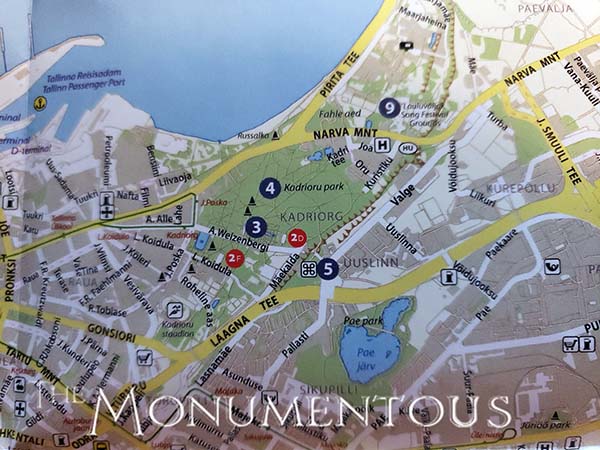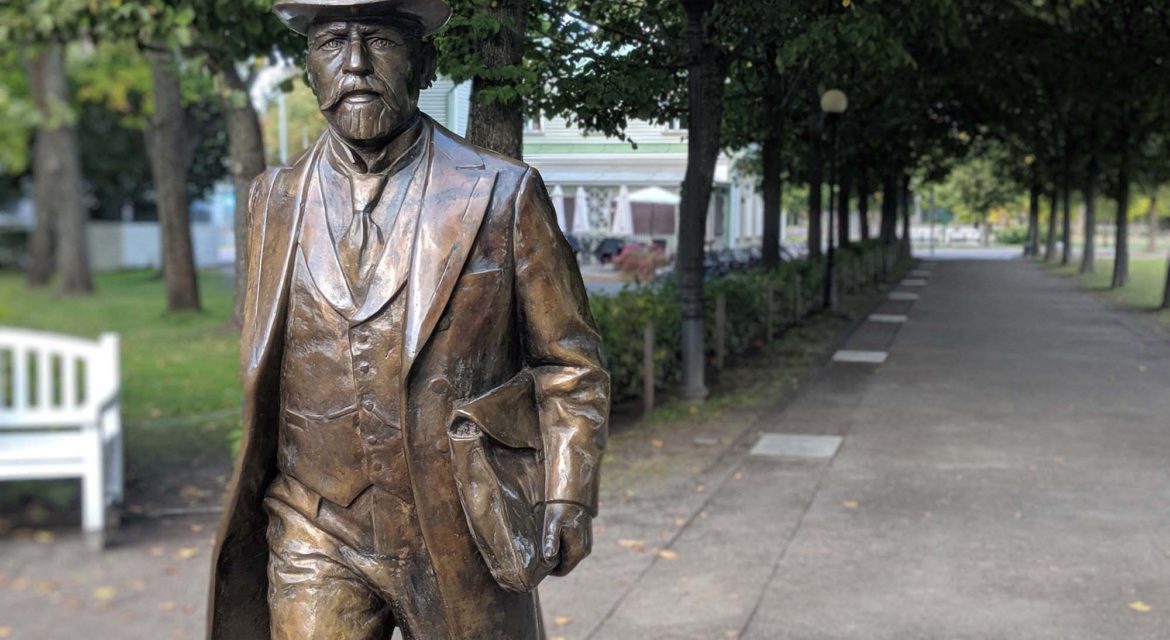 Originally a summer residence of the Russian Tsar Peter the Great, what is now known as Kadriorg Park in Tallinn, Estonia is home to multiple museums and monuments. Visitors can engage with pieces of Estonia art and culture just as easily as they can stroll across the acres and acres of forest and walkways to experience the past and present of Estonia is an especially meaningful way.
Originally a summer residence of the Russian Tsar Peter the Great, what is now known as Kadriorg Park in Tallinn, Estonia is home to multiple museums and monuments. Visitors can engage with pieces of Estonia art and culture just as easily as they can stroll across the acres and acres of forest and walkways to experience the past and present of Estonia is an especially meaningful way.

From a Russian Palace to a Showcase of Estonia Culture
In 1718, Peter the Great ordered the construction of a new European-style summer palace near Tallinn which became Kadriorg Palace. The Estonian and the German name for the palace means “Catherine’s valley”. The palace and the formal garden were constructed simultaneously and their designs included Baroque elements from various traditions.
 At the beginning of the 19th century, Tallinn was beginning to earn a reputation as a popular resort town and the seaside Kadriorg district became a hub of vacation activity. Kadriorg’s halcyon years as a summer resort lasted until the 1870s but the true turning point for Kadriorg came during the Era of Silence in the 1930s, when the governing of the state and the press were under strict control. During that time, the palace was rebuilt to become the residence of Konstantin Päts, the Head of State. The administrative building of the Office of the President was built in the vicinity.
At the beginning of the 19th century, Tallinn was beginning to earn a reputation as a popular resort town and the seaside Kadriorg district became a hub of vacation activity. Kadriorg’s halcyon years as a summer resort lasted until the 1870s but the true turning point for Kadriorg came during the Era of Silence in the 1930s, when the governing of the state and the press were under strict control. During that time, the palace was rebuilt to become the residence of Konstantin Päts, the Head of State. The administrative building of the Office of the President was built in the vicinity.
World War II saw the destruction of several buildings and many of the trees and green space in the park. Kadriorg Park remained ravaged and unkempt for years, but with the restoration of the independence of Estonia in 1991, extensive renovation works were launched at Kadriorg Palace and Park. The Mere and Kaarna Avenues, the Swan Pond and its surroundings, the palace and the flower garden, the historic canals, and the Concert Square would eventually be completely restored. In 2011, a Japanese garden was opened by the renovated North-East Pond. The underlying principle was the philosophy of the Japanese garden with its focus on the circle of life and the expressiveness of nature.
Today, Kadriorg Park houses the Estonian Art Museum, the Kadriorg Art Museum and the Mikkeli Museum, as well as monuments to cultural figures such as sculptor Amandus Adamson, author F. R. Kreutzwald and artist Jaan Koort. However. these are just some of the pieces of Estonia culture that residents and visitors can experience in the park.
Monuments, Parks and More
The Monument to Jaan Poska was erected in honor of the politician and a statesman who played an important role in the birth of the Republic of Estonia. The lifelike sculpture depicts one possible moment in the daily life of Poska hurrying along the street towards his Kadriorg home (8 Poska Street).
 The Monument to Friedrich Reinhold Kreutzwald was built at Swan Pond in 1958 to commemorate the famous folklorist and doctor. The granite base of the statue features bas-reliefs with motifs from his famous epic poem, Kalevipoeg. The Song of Vanemuine is in the front, Ride to the End of the World is in the back, The War with the Iron Men is on the south side while the Building the Town on the north side.
The Monument to Friedrich Reinhold Kreutzwald was built at Swan Pond in 1958 to commemorate the famous folklorist and doctor. The granite base of the statue features bas-reliefs with motifs from his famous epic poem, Kalevipoeg. The Song of Vanemuine is in the front, Ride to the End of the World is in the back, The War with the Iron Men is on the south side while the Building the Town on the north side.
The monument erected in honor of Amandus Adamson is near the Youth Park, which was introduced in 1936–1937 by the State Parks Agency. These monuments and attractions have helped to compel activity from both residents and visitors who want to experience the culture of Estonia as well as take a walk around the 70 hectares of park to experience everything from the multiple pathways to the flower beds surrounding the Swan Pond and the promenade leading from there to the president’s palace.
That experience of Estonia culture extends to Kadriorg Park’s proximity to the many monuments in Tallinn as well as monuments like Russalka that are within walking distance. Events also take place in the park throughout the year to attract a variety of audiences from across the city and region.
This variety of experiences as enabled Kadriorg Park to have such a notable position in numerous maps and resources of the city while also showcasing what it can mean for a park to be about so much more than an appreciation and protection and natural habitats.

The Legacy of One of the Most Historic Parks in Northern Europe
 Open all year round, Kadriorg Park has been labeled as one of the most beautiful historic parks in all of Northern Europe. What could just be another green space has become so much more thanks to the efforts to highlight and celebrate Estonia’s history and culture to create a legacy that will continue to define the Tallinn and the wider region.
Open all year round, Kadriorg Park has been labeled as one of the most beautiful historic parks in all of Northern Europe. What could just be another green space has become so much more thanks to the efforts to highlight and celebrate Estonia’s history and culture to create a legacy that will continue to define the Tallinn and the wider region.


